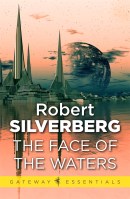
The Fluger
Price and format
- Price
- £2.99
- Format
- ebook
The Fluger was five meters long, had four thick legs, a body of impenetrable molecular density and numerous teeth capable of chewing diamonds into powder. It was four hundred massive kilos of violence, savagery and hatred.
When the Fluger arrived as unlisted cargo in the enclosed city of Olympus, it launched itself on a murderous rampage which couldn’t be halted. It presented that terrified utopian community with the problem of how to stop an irresistible force. The only answer seemed to be a hired alien assassin – an outer-space humanoid about whom the citizens of Olympus knew next to nothing except that he was a professional killer who would not quit until his job was done.
But when the irresistible force met the immovable object they turned that fragile city in the sky into a raging battlefield, and their ‘savior’ looked to become as much of a menace as his monster counterpart.
When the Fluger arrived as unlisted cargo in the enclosed city of Olympus, it launched itself on a murderous rampage which couldn’t be halted. It presented that terrified utopian community with the problem of how to stop an irresistible force. The only answer seemed to be a hired alien assassin – an outer-space humanoid about whom the citizens of Olympus knew next to nothing except that he was a professional killer who would not quit until his job was done.
But when the irresistible force met the immovable object they turned that fragile city in the sky into a raging battlefield, and their ‘savior’ looked to become as much of a menace as his monster counterpart.




